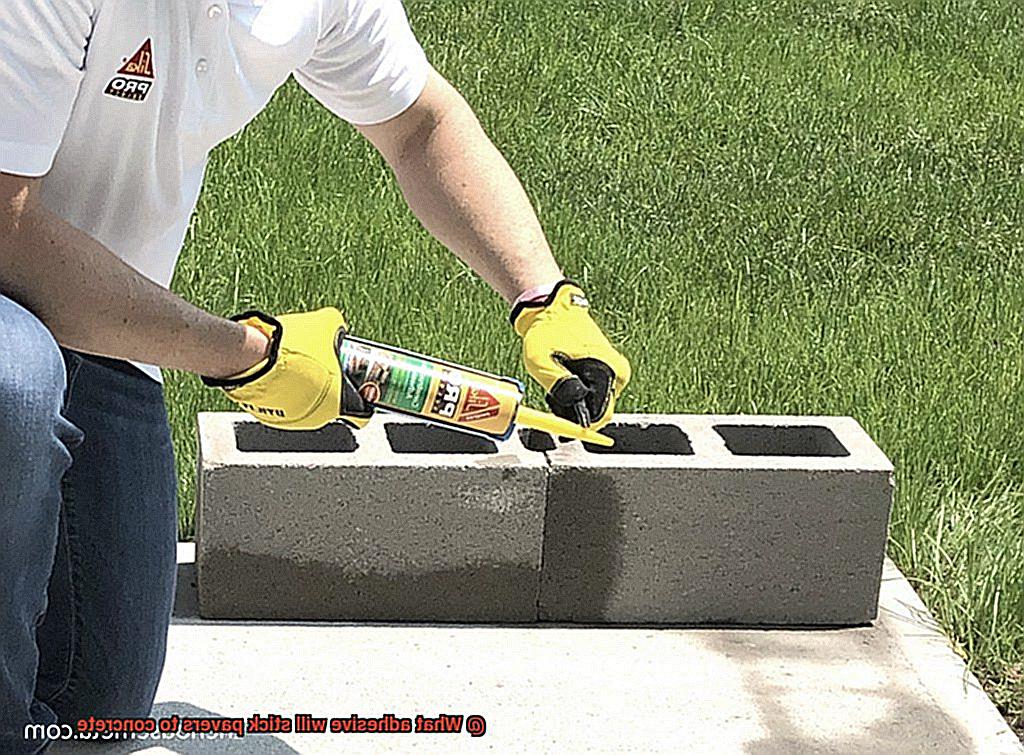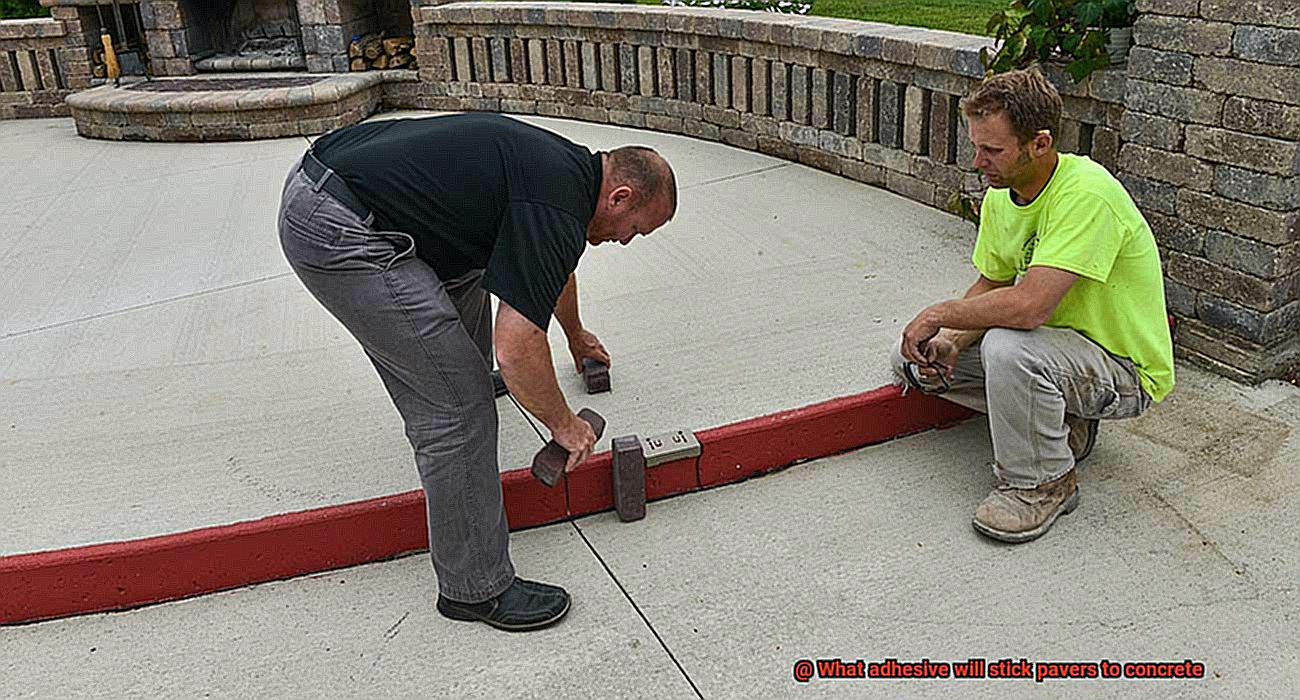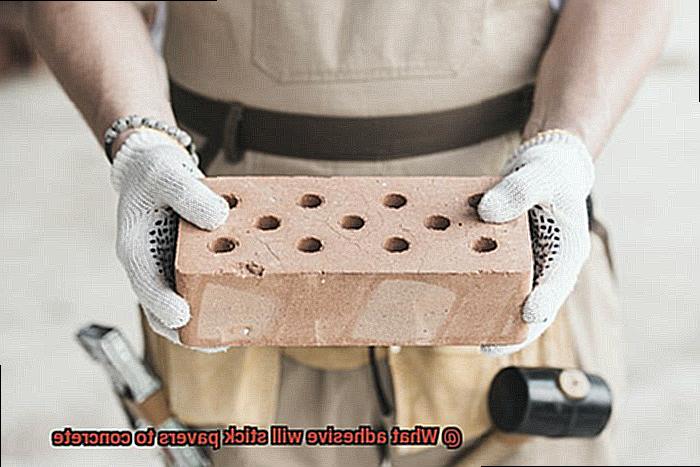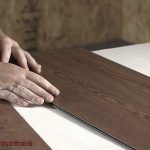You’re ready to transform your outdoor space into a jaw-dropping oasis with some beautiful pavers. But wait, before you dive into your creative project, let’s address the burning question: what adhesive will actually stick those pavers to concrete?
No worries, my friend. We’ve got your back. In this comprehensive guide, we’ll explore the wonderful world of adhesives and help you find the perfect one to make sure your pavers stay put and withstand whatever Mother Nature throws their way.
Types of Adhesives:
Contents
- 1 Types of Adhesives:
- 2 What is Polymeric Sand Adhesive?
- 3 Benefits of Polymeric Sand Adhesive
- 4 Alternative Adhesives for Sticking Pavers to Concrete
- 5 Choosing the Right Adhesive
- 6 Preparing the Surface for Adhesive Application
- 7 Using Mechanical Fasteners with Adhesives
- 8 Factors to Consider When Choosing an Adhesive
- 9 Conclusion
- Polyurethane Construction Adhesive: This bad boy is known for its super strength, durability, and ability to brave any weather condition. It forms a rock-solid bond between pavers and concrete that can handle even the harshest climates. Plus, it’s flexible enough to handle expansion and contraction without breaking a sweat. Just keep in mind that it might be a bit pricier than other options.
- Construction Adhesive Epoxy: If you’re looking for an adhesive that can handle heavy-duty applications like a champ, epoxy is your go-to buddy. It boasts a high-strength bond and can resist moisture, chemicals, and temperature changes like nobody’s business. However, be warned – epoxy can be a bit tricky to work with due to its short working time and specific curing requirements.
- Construction Adhesive with Polymeric Sand: Talk about a dynamic duo. This combo packs a punch by using both construction adhesive and polymeric sand. The adhesive component bonds your pavers to concrete while the sand fills those pesky joints, keeping weeds at bay and adding extra stability. Plus, it won’t break the bank and is relatively DIY-friendly.

Advantages and Disadvantages:
Each type of adhesive has its own pros and cons. Polyurethane construction adhesive is a weather-resistant beast but might put a dent in your wallet. Epoxy adhesives are super strong but require some extra TLC during application. And while adhesives with polymeric sand are budget-friendly, they may not be as sturdy as the other options.
Important Considerations:

Before you go adhesive shopping, make sure your concrete surface is clean, dry, and free from any debris. Always follow the manufacturer’s instructions for applying the adhesive and give it proper time to cure. And don’t forget to take into account factors like
What is Polymeric Sand Adhesive?
When it comes to creating stunning and resilient outdoor spaces, securing pavers to concrete is a crucial step. Enter polymeric sand adhesive, a remarkable bonding agent that offers strength, durability, weed resistance, and aesthetic appeal. In this article, we will delve into the wonders of polymeric sand adhesive and explore why it is the go-to choice for adhering pavers to concrete.
Flexible Joints and Unyielding Durability:
Polymeric sand adhesive possesses a unique ability to create flexible joints between pavers. This flexibility allows for slight movement without compromising the stability of the pavers. It ensures that the joints remain intact even in freeze-thaw cycles or areas with heavy foot traffic. Moreover, this adhesive’s exceptional durability means it can withstand harsh weather conditions, making it perfect for outdoor applications exposed to rain, sun, and temperature fluctuations.
Weed-Inhibiting Properties:
Say farewell to unsightly weeds sprouting between your pavers. The sand particles in polymeric sand adhesive act as a natural barrier, filling the gaps between the pavers and preventing weed growth. This not only maintains the pristine appearance of your paved area but also reduces the need for regular weeding.
Aesthetic Appeal:
Polymeric sand adhesive offers more than just functionality; it adds an elegant touch to your outdoor space. With a wide array of colors available, homeowners can select a shade that complements their pavers, enhancing the overall visual allure of the paved area.
Simple Application Process:

Applying polymeric sand adhesive is a breeze. Start by sweeping the adhesive into the joints between the pavers. Then, activate the adhesive by wetting it with water. Afterward, remove any excess sand, leaving behind clean and secure joints.
Benefits of Polymeric Sand Adhesive
Imagine a picturesque outdoor patio or walkway, with perfectly placed pavers that exude elegance and charm. The secret behind their seamless appearance? Polymeric sand adhesive – a game-changer in the world of paver-to-concrete bonding. Let’s delve into the remarkable benefits of this adhesive and discover why it is the go-to choice for homeowners and professionals alike.
Unyielding Strength:
Polymeric sand adhesive possesses an impressive ability to create an unbreakable bond between pavers and concrete. Infused with special polymers that react with water, it forms a flexible yet durable connection capable of withstanding heavy foot traffic and even vehicular loads. Your pavers will stay firmly in place, no matter what life throws at them.
Weed-Free Paradise:
Bid farewell to unsightly weeds that can ruin the aesthetic appeal of your paved area. Polymeric sand adhesive fills the gaps between pavers, creating a solid surface that leaves no room for unwanted plant growth. Spend less time on maintenance and more time enjoying your beautiful outdoor space.
Erosion Control:
Polymeric sand adhesive excels at preventing erosion and shifting of pavers. By filling the gaps, it forms a solid layer that keeps water from seeping through and destabilizing the base. This ensures the longevity and integrity of your paved area, preventing any movement or sinking of pavers.
Weather Resistant:
Mother Nature can be unpredictable, but polymeric sand adhesive is up to the challenge. With excellent resistance to harsh weather conditions, including freeze-thaw cycles, it remains intact without cracking or deteriorating. This makes it an ideal choice for outdoor applications, ensuring your pavers stay securely in place for years to come.
Easy Application:
Applying polymeric sand adhesive is a breeze, suitable for both professionals and DIY enthusiasts. Simply sweep the adhesive into the gaps between pavers and wet it with water. The water activates the polymers, causing them to harden and create a strong bond. It’s a hassle-free process that saves time and effort.
Aesthetically Pleasing:
Polymeric sand adhesive comes in various colors, allowing you to choose a shade that complements your overall design scheme. This attention to detail ensures a cohesive and visually appealing finish to your paved area, elevating its beauty and charm.
Alternative Adhesives for Sticking Pavers to Concrete
In this article, we will explore a range of alternative adhesives that are perfect for sticking pavers to concrete. These adhesives will provide a long-lasting and secure bond, ensuring that your pavers stay in place even under heavy traffic and extreme weather conditions.
One popular choice is polymeric sand adhesive. This unique adhesive is a blend of sand and special polymers that, when activated with water, forms a strong adhesive bond. It is ideal for jointing systems in interlocking pavers, providing excellent stability and preventing weed growth. Applying polymeric sand adhesive is a breeze, making it a favorite among DIY enthusiasts and professionals alike.
If you’re looking for maximum strength and durability, epoxy resin is a great option. This two-component adhesive consists of a resin and a hardener that chemically react to create a durable and long-lasting bond. Epoxy resin is known for its high strength and resistance to chemicals, making it perfect for sticking pavers to concrete. It offers exceptional durability and can withstand even the harshest environments.
Construction adhesive is another alternative worth exploring. This versatile adhesive is commonly used for bonding construction materials together, including pavers and concrete. Available in different formulations like polyurethane or epoxy-based adhesives, construction adhesive provides a strong bond that can endure extreme conditions. It’s reliable and offers great versatility.
For those who prefer a more specialized solution, some manufacturers offer adhesives specifically designed for adhering pavers to concrete. These pre-mixed formulas save time on-site and ensure optimal performance. They are formulated with unique properties that make them perfect for this specific application.
When choosing an adhesive, it’s important to consider factors such as the type of pavers being used, the condition of the concrete surface, and any environmental factors that may affect the adhesive’s performance. Proper surface preparation is also crucial, ensuring the concrete surface is clean, dry, and free from debris or contaminants.
Choosing the Right Adhesive
Choosing the right adhesive is crucial for creating a long-lasting and secure bond. With so many options available, it can be challenging to determine which adhesive is best for your project. Fear not. I’m here to guide you through the process of selecting the perfect adhesive for your pavers.
To begin, let’s explore the factors you need to consider when choosing an adhesive:
- Type of Pavers: Different types of pavers require different adhesives. Natural stone pavers necessitate specialized adhesives specifically designed for bonding natural stone. Conversely, concrete pavers can be bonded using standard concrete adhesive.
- Climate and Weather Conditions: If you live in an area with extreme temperature variations or frequent freeze-thaw cycles, selecting an adhesive that can withstand these conditions is vital. Look for adhesives labeled as freeze-thaw resistant or designed for outdoor use.
- Surface Preparation: Prior to applying the adhesive, ensure that the concrete surface is clean, dry, and free from dirt, dust, or grease. Achieving a thoroughly clean surface may involve using a pressure washer or wire brush.
- Setting and Curing Time: Consider your timeline when choosing an adhesive. Some adhesives have fast-setting times, while others require longer setting and curing periods. Factor in your project’s time constraints when making your selection.
- Budget: Adhesive prices can vary significantly, so finding a balance between quality and affordability is important. Look for adhesives that meet your project needs without straining your budget.
Preparing the Surface for Adhesive Application
Preparing the surface for adhesive application is a crucial step in ensuring a strong and durable bond between pavers and concrete. To achieve this, there are several important steps to follow.
- Clean the surface: Start by removing any loose particles from the surface using a broom or brush. For stubborn dirt or stains, a pressure washer can be used. It’s essential to have a squeaky clean surface free from any contaminants that might hinder the adhesive’s ability to bond effectively.
- Repair cracks and uneven areas: Fill small cracks with a concrete patching compound. For larger cracks, it may be necessary to seek professional assistance. Additionally, level out any uneven areas using a self-leveling compound to create a smooth surface for the pavers.
- Etch the concrete: Etching creates a rough texture on the surface, enhancing the adhesion of the adhesive. This can be done using an acid-based etching solution or mechanical methods such as sandblasting or grinding. Follow the manufacturer’s instructions for safety and effectiveness.
- Rinse and dry: After etching, rinse off any residue left behind by the etching solution and let the surface dry completely. Moisture can interfere with the adhesive’s ability to bond, so ensure a dry surface before moving forward.
- Prime the surface: Primer promotes adhesion and ensures a stronger bond between the pavers and concrete. The type of primer will depend on the adhesive being used, so follow the manufacturer’s recommendations. Apply the primer according to instructions and allow it to dry completely before proceeding with adhesive application.

Using Mechanical Fasteners with Adhesives
Today, we’ll explore the dynamic duo of mechanical fasteners and adhesives, a match made in paving heaven. Whether you’re transforming your backyard oasis or embarking on a grand-scale project, this powerful combination ensures that your pavers will remain steadfast for years to come.
Choosing the Dynamic Duo:
Let’s start by introducing our stars – mechanical fasteners and adhesives. Picture stainless steel screws and nails, standing tall against the elements with unwavering strength and corrosion resistance. These trusty allies are here to fortify your paver installation. But remember, not just any adhesive will do. Choose an adhesive specifically designed for pavers and concrete, one that guarantees a bond that will endure the test of time.
Preparation: The Foundation of Success:
Before we dive into the adhesive wonderland, let’s lay the groundwork for success. Imagine a canvas, pristine and unblemished. That’s how your concrete surface should be before applying the adhesive. A thorough cleaning eliminates any dirt or debris that could thwart your bond. This clean slate sets the stage for a rock-solid connection. Once cleaned, apply the adhesive with precision, following the manufacturer’s instructions to a tee. Patience is key – allow ample drying or curing time for the adhesive to work its magic.
Paving the Way: A Dance of Precision:
Now comes the moment you’ve been waiting for – laying those beautiful pavers. Each piece is like a puzzle, fitting perfectly into place with unwavering determination. Align them flawlessly, ensuring uniform spacing throughout. As you dance with your pavers, be vigilant – remove any excess adhesive promptly to preserve their pristine appearance.
Fastening for Indestructible Might:
To propel your bond into the realm of invincibility, it’s time to unleash the power of mechanical fasteners. Like knights in shining armor, they pierce through the pavers, anchoring them firmly to the concrete. The number and spacing of these fasteners depend on the weight, size, and usage of your paver installation. Remember, follow the rules of engagement – pre-drill pilot holes and employ the right tools for insertion.
Let it Cure: The Final Act of Brilliance:
Congratulations. You’ve reached the pinnacle of your installation journey. Now, grant your pavers the gift of time to cure before subjecting them to their ultimate destiny. This final step ensures an unyielding foundation that can withstand any challenge life throws at it.
Factors to Consider When Choosing an Adhesive
When it comes to sticking pavers to concrete, the adhesive you choose can make all the difference. It’s essential to select an adhesive that provides a strong and durable bond, able to withstand heavy foot traffic and challenging weather conditions. So, what factors should you consider when selecting an adhesive for this purpose? Let’s explore the key factors that will empower you to make an informed decision.
Bond Strength:
The bond strength between the pavers and the concrete surface is of utmost importance. Look for adhesives specifically formulated for paver-to-concrete applications with high bond strength ratings. This ensures that your pavers remain firmly in place, even under constant pressure or in extreme weather conditions.
Compatibility:
Adhesives come in various formulations designed for specific materials. Consider the compatibility of the adhesive with both the pavers and the concrete surface. This ensures proper adhesion without risking potential damage or bond failure. Seek recommendations from manufacturers or experts regarding adhesives suitable for your specific paver and concrete materials.
Flexibility:
Concrete surfaces expand and contract, while pavers may shift slightly over time. To accommodate these movements without compromising the bond, opt for flexible adhesives. Polyurethane-based adhesives, renowned for their flexibility, are a popular choice for paver-to-concrete applications.
Weather Resistance:
Outdoor pavers face constant exposure to varying weather conditions. Select an adhesive that is resistant to UV rays, moisture, heat, and cold. This ensures that the bond remains intact and reliable over time, regardless of the environmental challenges it encounters.
Ease of Use:
Consider your skill level and available resources when choosing an adhesive. Some adhesives require special tools or equipment for application, while others may have specific instructions or curing times. Choose an adhesive that suits your needs and guarantees a smooth and efficient installation process.
Environmental Impact:
In today’s world, eco-friendly options are gaining popularity. Look for adhesives with low volatile organic compounds (VOCs) and minimal toxic emissions. By choosing environmentally friendly adhesives, you not only contribute to a healthier environment but also create a safer living space for those using the paved surface.
Cost:
While cost is a significant consideration, it should not be the sole deciding factor. Strike a balance between cost, quality, and durability. Investing in a high-quality adhesive may incur a higher initial expense, but it will save you money in the long run by providing a longer-lasting bond.
Ccvj1sFWxw8″ >
Conclusion
In conclusion, there is a range of adhesive options available for sticking pavers to concrete. Each type of adhesive offers its own set of advantages and disadvantages, so it’s crucial to carefully assess your project requirements before making a decision.
If you’re looking for strength and durability that can withstand even the harshest weather conditions, polyurethane construction adhesive is an excellent choice. However, keep in mind that it may come with a higher price tag compared to other options.
For maximum strength and resistance against moisture and chemicals, epoxy adhesives are the way to go. Just be mindful of their short working time, as they require precise application.
If you’re on a budget but still want a reliable option, consider adhesives with polymeric sand. These combine the bonding properties of construction adhesive with the joint-filling capabilities of sand. They are relatively easy to use and won’t break the bank.
Remember that proper preparation is key before applying any adhesive to concrete. This includes thorough cleaning, repairing cracks or uneven areas, etching for better adhesion, rinsing off residue, and priming if necessary.
When selecting an adhesive, take into account factors like the type of pavers used, climate conditions, setting and curing time requirements, budget constraints, and environmental impact.






